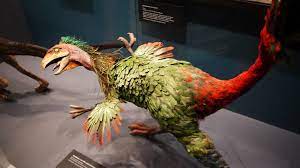In 1976, paleontologists found two sets of footprints that dated back 3.7 million years. One was apparently the first known indication of erect motion amongst early human beings. The other seemed to belong to a bear. But researchers now think that the second pair of footprints also belonged to humans.
That footprint, experts believe, maybe proof of a formerly unknown human ancestor. If so, then two bipedal humans, rather than one, as supposed earlier, wandered the earth at the identical time.
According to anthropologists at Dartmouth College, these footprints established that the development of erect walking was more intricate and more fascinating than had been thought earlier. A study on the same was published in Nature.
According to the anthropologists, there were at least two hominins, who walked in separate ways, on differently shaped feet at the time in humanity’s evolution. This showed that the attainment of the human-type of walking was less linear than many would think it was.
Hitherto, scientists had believed that only one species of humans had lived at that time. That was the Australopithecus afarensis which had roamed ancient Africa some 3.9 to 2.9 million years before. Lucy the skeleton was a well-known example of Australopithecus afarensis.
But the second pair of footprints seemed to belong to a different type of human, which had a strange manner of movement. Instead of walking linearly, the footprints indicated that the creature swung one of its feet forward and landed it in front of the other.
Curiously, scientists suspect that both early humans traversed the site of Laetoli in northern Tanzania at about the same time. After a volcanic eruption, they made their way across ash which had turned to mud.

At some point, according to biological anthropologists at Ohio University’s Heritage College of Osteopathic Medicine, the two early humans could have caught seen each other.
They proposed that the enigmatic owner of the second pair of footprints could have looked out across the countryside and seen an Australopithecus afarensis walking elsewhere. The anthropologists were excited about the fact that there were two hominin species, living at the same place.
Following the probable meeting, the volcano exploded again. A new coating of ash enclosed the footprints in Laetoli and conserved them for millennia. But it took much longer for investigators to unravel their importance.
In 1976, paleontologists discovered the Australopithecus afarensis prints at Laetoli site G. These, they discerned, were the earliest known footprints left by two-footed human beings. They also found footprints at Laetoli site A, but couldn’t deduce if they were left by a bear or by a human.
The experts were not influenced by either account according to paleoanthropologists at the Max Planck Institute for Evolutionary Anthropology. Eventually, the site A prints were more easily overlooked rather than clarified.
It wasn’t until of late that the team set out to find and revisit the footprints at Laetoli site A. After excavating the site afresh, they also studied how bears moved and found that they walked on two feet for just 1 percent of the time.
Thus, it was more likely that the footprints at Laetoli site A belonged to an early species of human, not a primeval bear.
The site A footprints were unlike those of any other hominin according to the team. They were oddly wide and short, and the feet responsible for their creation may have had a big toe that was capable of thumb-like grasping, similar to the big toe of apes.
And if they did belong to early humans, then the prints contested earlier held theories about the development of early human history as they showed that Australopithecus afarensis and something else were really at the same time and at the same place.
However, at the moment, the furtive human ancestor remains an enigma. Though it was proposed that it stood just three feet tall, only fossil remains could provide further awareness of what this early human looked like.












